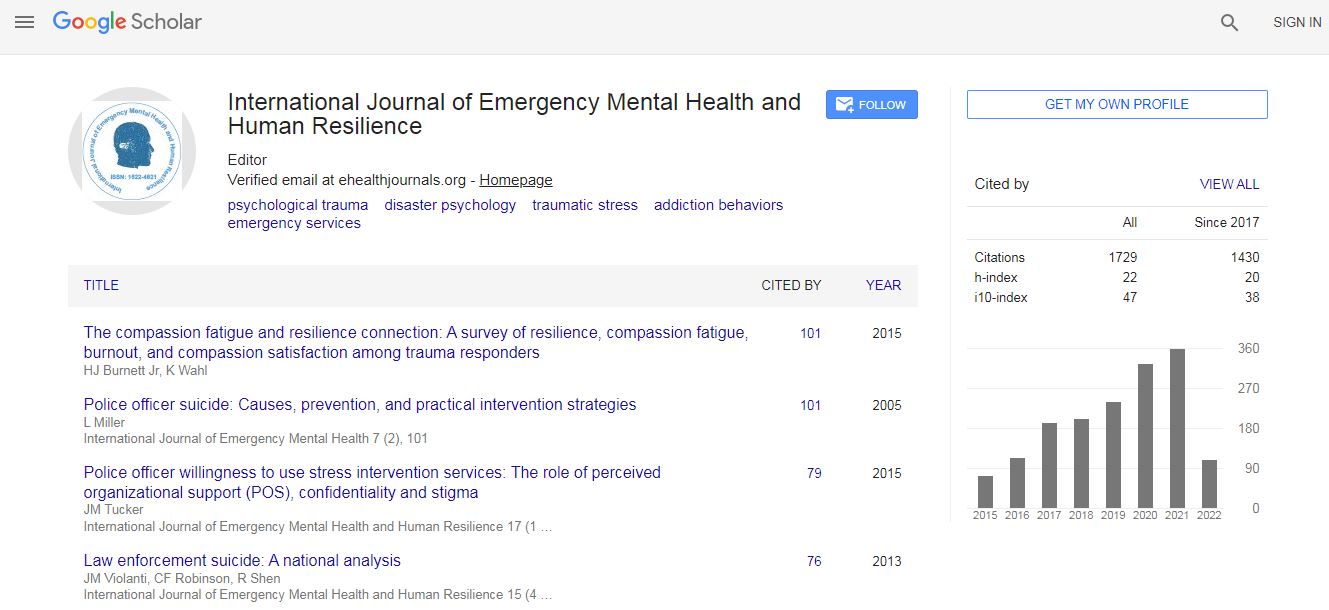Our Group organises 3000+ Global Events every year across USA, Europe & Asia with support from 1000 more scientific Societies and Publishes 700+ ║┌┴¤═° Journals which contains over 50000 eminent personalities, reputed scientists as editorial board members.
║┌┴¤═° Journals gaining more Readers and Citations
700 Journals and 15,000,000 Readers Each Journal is getting 25,000+ Readers
Citations : 4948
Indexed In
- Index Copernicus
- Google Scholar
- CiteFactor
- Publons
- Pubmed
- science Gate
- scispace
- world cat
Useful Links
Related Subjects
Share This Page
Etiopathologies of self-integration: Disrupting global constructs in cognitive diseases
3rd International Summit on Mental Disorders and Illness
Denis Larrivee
Loyola University, USA
ScientificTracks Abstracts: IJEMHHR
Abstract
Extant studies show that several, widely prevalent, cognitive diseases affect the phenomenal construct of self, diminishing the capacity to unify brain and bodily behavior. Schizophrenia, for example, is marked by disturbances of the self construct, seen in such symptoms as an abnormal sense of the body, loss of ego boundary and a confused sense of agency. Likewise, Alzheimer├ó┬?┬?s Dementia manifests as a progressive loss of control of default mode, self circuitries. Global states like the self construct assist integration through operational features characterized by stability, flexibility, and hierarchy, which are required for performance and that are intrinsic to the construct in various behavioral operations. Among the key operations known to be affected by these diseases involve those of motor planning and goal directed, action execution, which are posited to entail disorders of self agency. Schizophrenia, for example, is regarded as a disease of self agency. Conceptually, the motor plan is understood to be teleologically oriented, linking an agent to an objective terminus. Theories of the motor plan invoke a predictive processing model in which the identification of expected actions are confirmed through their sensory identification, a process that could serve to identify the source of actions. However, current evidence indicates that goal specific information is not constitutive to action identification processes of the motor plan and schizophrenia patients have been shown to be capable of identifying their actions in automatic behaviors, while nonethelessimpaired in the intentional performance of motor tasks. These data suggest that goal specific information needs to be linked to a representation of the agent a process that, therefore, appears to be defective in schizophrenia. Moreover, it suggests that identification of the agent as the action source is requisite for the execution of motor plans. This talk will explore likely proxies for agent representation in goal execution and their disruption in cognitive diseases like schizophrenia Hence, action selection processes appear to involve neural mechanisms other than those of action identification. Among these, representations of body posture are likely to be an important proxy for global self-representation during dynamic actions, one that could be directly modified by goal specific content. Recent studies suggest that several structures may assist in structuring goal directed activity, including the orbitofrontal cortex, hippocampus, and dorsal premotor cortex. This talk will explore the relationship between these findings and how schizophrenia may modify the representation of self agency during goal directed activity.Biography
Dr. Denis Larrivee is a Visiting Scholar at the Mind and Brain Institute, University of Navarra Medical School (Spain) and Loyola University Chicago and has held professorships at the Weill Cornell University Medical College, NYC, and Purdue University, Indiana. A former fellow at Yale University’s Medical School he received the Association for Research in Vision and Ophthalmology’s first place award for studies on photoreceptor degenerative and developmental mechanisms. He is the editor of a recently released text on Brain Computer Interfacing with InTech Publishing and an editorial board member of the journals Annals of Neurology and Neurological Sciences (USA) and EC Neurology (UK). An International Neuroethics Society Expert he is the author of more than 70 papers and book chapters in such varied journals/venues as Neurology and Neurological Sciences (USA), EC Neurology (UK), Journal of Neuroscience, Journal of Religion and Mental Health, and IEEE Explore. In 2018 he was a finalist in the international Joseph Ratzinger Expanded Reason award.

